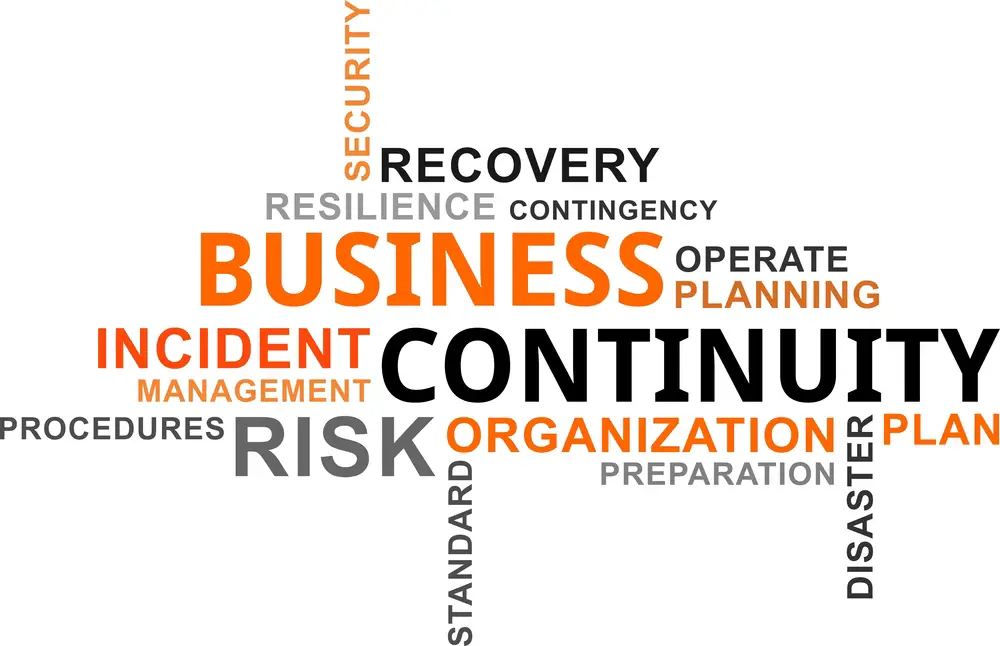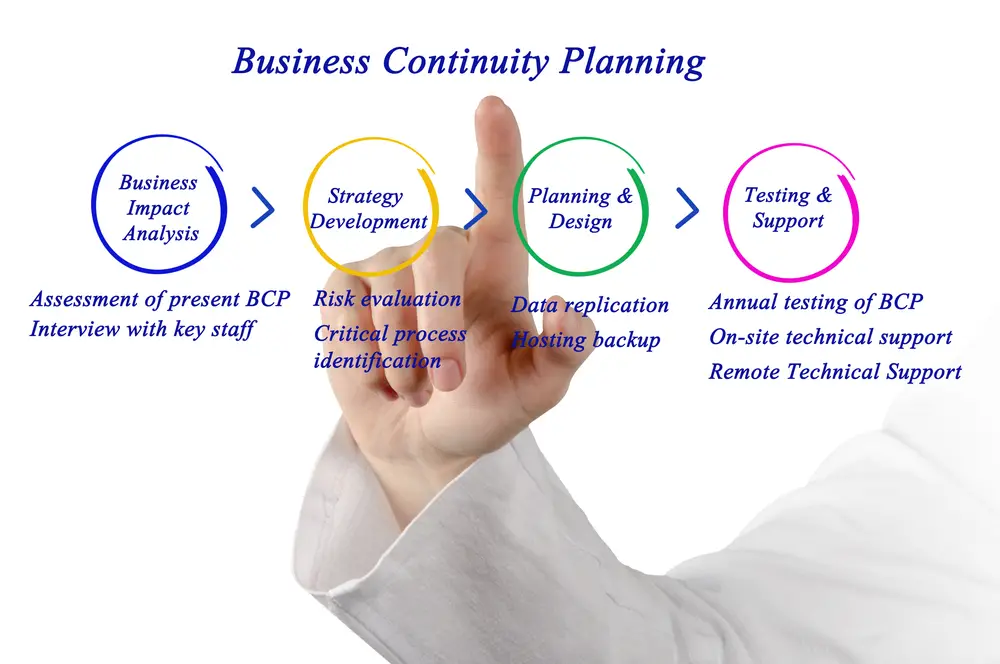Business continuity management (BCM) is important to any organization’s operations. BCM helps organizations prepare for, respond to, and recover from any type of disruption. It is essential for organizations to have a clear understanding of the objectives of a BCM system to ensure that it meets all the necessary criteria and provides the best possible protection against unexpected events.
A comprehensive Business Continuity Management System (BCMS) is essential. No matter how well-crafted the strategy of a business might be or how successful its operations are if precautions aren’t taken to ensure continuous operation during unanticipated crises or emergencies.
The business may suffer huge financial losses or even collapse completely. BCMSs can help organizations equip themselves with the knowledge and resources they need to face any contingency, no matter what form it takes confidently, from physical events like flooding and fire to digital security lapses or software bugs.
In this blog post, we’ll look at why BCMS has become so important for businesses today and also explore some of the key objectives that an effective BCMS should strive for in organizations.
Objective #1: Minimizing Losses During Disruptions
The main goal of a business continuity management system is to minimize losses during disruptions. This includes minimizing financial losses, operational losses, and any other losses that could occur due to a disruption in service or operations
In having an effective BCM system in place, organizations can minimize their losses by taking proactive steps such as developing contingency plans and testing them regularly.
Objective #2: Ensuring Business Continuity
A key objective of a BCM system is to ensure business continuity in the face of any type of disruption. This means that companies must be prepared for any potential disruption to continue operations with minimal disruption.
To do this, organizations must develop effective strategies for responding quickly and efficiently when disruptions occur. This should include creating emergency response plans and training staff on how to execute them appropriately.
Additionally, businesses should consider investing in technology solutions that can help them maintain operations even if disruptions occur in their supply chain or customer base.
Objective #3: Enhancing Risk Mitigation Strategies
Another objective of a BCM system is to enhance risk mitigation strategies so that organizations can better prepare for different threats and risks. Organizations should develop comprehensive risk management plans that cover all areas of their operations, including financial risks, technological risks, environmental risks, human resources risks, and more.
These plans should be tailored specifically to each organization’s needs to effectively identify potential threats and create appropriate responses for each situation. Further, organizations should also make sure their risk management plans are regularly monitored to be updated based on changing conditions or new threats/risks that arise over time.
Business continuity planning is an organization-wide management process that aims to prevent service interruptions and restore the organization’s full functionality. It is essential to keep vital operations functioning in the event of a natural disaster and to return to business as soon as possible.
Business continuity plans are prepared to deal with various unpredictable events, including fire outbreaks, cyber-attacks, and other external threats.
Sometimes disasters occur without warning. Even if we’ve been advised before the event, there are still several factors in the event of an unexpected disaster. Each incident is unique, and understanding why business continuity is critical is essential.
Business Continuity Planning Process
Business continuity planning is the process of developing an organized strategy to help ensure the continuous operation of a business in response to any potential disruption. It involves creating a plan that outlines how a business will respond to various threats, such as natural disasters, pandemics, and cyber-attacks.
The goal of this planning is to minimize downtime and keep operations running smoothly during difficult times.
The first step in business continuity planning is assessing the risk factors that could potentially disrupt the company’s operations. This includes identifying potential threats, evaluating their likelihood of occurring, and determining their impact on the business if they do occur.
After identifying these risks, the next step is to create a comprehensive business continuity plan. This plan should outline strategies for responding to such events and procedures for restarting or continuing operations afterward.
The third step in this process involves putting the plan into action. This includes regularly testing different aspects of the plan and ensuring that all personnel involved are adequately aware of their roles and responsibilities within it. Finally, all necessary resources must be allocated for carrying out the tasks outlined in the plan.
How to write a Business Continuity Plan?
A business continuity plan bcp is a document that outlines how a business will continue to operate during and after an unexpected event. The plan comes after doing a business impact analysis on the organization to determine critical business processes.
The purpose of a business continuity plan is to minimize the impact of an interruption to normal business operations. Business continuity institute(BCI) provides information on business continuity systems frameworks that organizations can follow.
- Identify the essential functions of the business
Assess the current processes and services to identify which functions are essential for day-to-day operations. - Develop strategies for keeping those functions running during an interruption
Identify methods that can be used to sustain these critical functions, such as backups, redundancies, or alternative solutions. - Create a plan for implementing the strategies
Develop detailed plans on how each strategy will be implemented, who is responsible for implementing it, and when it should be done by. - Test and revise the plan regularly
Test any strategies identified in step two, and refine and revise them as needed. Create easy-to-follow checklists, so employees know what needs to be done in different scenarios. Review your plans regularly to ensure they are still relevant and up-to-date with changes in technology or procedures.
It is important that your business develop and maintain an employee team that helps you develop and maintain continuity plans. Ideally, the team should comprise the Deputy Chief Executive Officer & Director of IT. Simple, effective plans.
At a minimum, provide continuity of group role responsibilities and contact info. Alternatively, it is necessary to add rules or checklists in the event of unexpected incidents. The business’s daily functions depend upon various resources including people and power tools. It’s no different when recovering from an unavoidably destructive situation.
Disaster recovery plan
The disaster recovery plan is very detailed, but it is not an integral component of the recovery plan. It generally has been limited to concentrating more on information technology systems in a business. The disaster recovery plan aims to preserve data for rapid recovery if a disaster occurs.
Usually, they focus on IT operations because they influence everything within the company. Disaster recovery plans involve protocols from outside IT departments, especially from financial industry regulatory authority. For example, there are steps needed to be taken by recovering personnel to ensure a smooth resumption.
Mitigation strategies
The mitigation strategies are based on risk evaluation points. The companies must assess their risk and mitigation measures. In determining a mitigation policy, it is important to understand the cause or failure of a control system. These dangers should be avoided. The risk assessment process is performed with the goal of assessing the threat.
This step will help reduce risk by preventing the disruption of business processes. Companies have been provided with tools to detect threats. The detection mechanisms are used as monitoring instruments that help identify and report mistakes within the business process.
Mitigation strategies are a vital component of this continuity plan. They can involve risk assessment, up-to-date insurance guidelines, updated emergency procedures for personnel, asset protection plans, and the development of backup operations. Considering these strategies as part of an actionable plan that works best for your organization is important.
It should act as a framework to ensure optimal business operations even during distressful situations. With the required parts in place, you can easily provide your business with certain protections beyond financial assistance or other external factors – allowing it to emerge stronger post-crisis.
Business Continuity Plan
Generally, the plan aims at maintaining a smoothly run business. This plan focuses on a whole enterprise and is specific in identifying situations in which operation risks can arise. This objective will help businesses remain operational and continue to perform their business activities.
When implementing an effective business continuity strategy, companies are receptive to change even when emergency situations arise. This helps minimize disruption during and after catastrophes. Besides the requirements, the company must address the needs of the vendors and their partners.

Business Continuity Plan Template
Using these templates, you can document business activities during disruptions and disasters to maintain critical processes. The plan contains a space for recording business functions, recovery priority, recovery plan, and alternative locations. Plan systematically for interruptions and minimize downtime so you can maintain optimal performance.
Strategic recovery
The recovery strategy is designed to recover business revenues lost in catastrophic situations. Identifying the loss in profits and finding the necessary resources is essential. In addition, it is important to indicate how quickly a person needs a certain amount of resources to acquire.
In deciding which resources are available, it’s a matter of how to find and develop them. This recovery program provides guarantees. Moreover, you have to look at the resources necessary to support critical business functions.
Crisis response strategy
Unless there is no incident management plan, the organization may not be prepared to provide a plan of action in a crisis. This strategy allows firms to determine the most critical activities for disaster management. This usually covers evacuations, communications modes, and situational assessments.
It’s a basic document that defines how your business operates when alarming and unforeseen situations happen. BCP comprehensively plans various business processes, partners, assets, or workforce.
Creating a crisis response strategy is the key to effectively managing and minimizing the impact of any unexpected event. A well-crafted plan can help you maintain control and ensure that your business continues to operate without disruption.
There are four steps to creating an effective crisis response strategy:
- Identify potential crisis scenarios
List all potential risks and crises that could affect your business operations. This includes natural disasters, customer service issues, supply chain disruptions, security threats, etc. - Develop strategies for mitigating each scenario
Develop strategies for responding to each identified crisis before it happens. These strategies should include specific actions such as backup plans, strategic partnerships, or alternative solutions. - Create a plan for implementing the strategies
Develop detailed plans on how each strategy will be implemented, who is responsible for implementing it, and when it should be done by. Additionally, create checklists for every step so that employees know how to respond in different scenarios. Business continuity plan objectives must be followed when creating checklists. - Test and revise the plan regularly
Test any strategies identified in step two, and refine and revise them as needed. Additionally, review your plans regularly to ensure they are still relevant and up-to-date with changes in technology or procedures.
Training program
The training program and timeline must be developed. Your training plan needs to be tested annually. It helps identify errors and gaps in the plan and updates it to the stakeholders. As you can see below, some businesses only test a plan once per year, which depends on business preferences.
The benefits of business continuity planning are obvious: unpreventable situations can occur anytime, from accidents to natural disasters.
Setting up the governance system
You should outline your team’s duties and their title and contacts. It is recommended that you include the organization diagram.
Key Business Continuity Management and Planning Considerations
Business continuity planning is essential for maintaining any organization’s long-term success and sustainability, regardless of its size. From understanding the scope of recovery goals to responding quickly and efficiently to an emergency situation, having a plan in place can be a lifesaver.
Even so, there are a few key considerations that should always be taken into account when developing a business continuity management plan. These include identifying potential risks within your organization’s activities and operations and assessing the impact of those risks on business objectives.
Determining which customer needs must be met in case of an emergency, developing strategies to mitigate any identified risks, analyzing the effectiveness of implemented plans on an ongoing basis, and regularly updating as required. With these elements in place, organizations can be better equipped to make informed decisions during times of crisis.
There are many tools and services to assist in developing and improving your business continuity plan. Among these factors you should look for is Business Continuity management software. There are hundreds of business continuity software available.
The importance of senior organizational leaders supporting your business continuity management and planning
Your leadership needs to support business continuity and action plan to succeed. This leadership has increasing importance for disasters, flood events, pandemics, and breaches in data centers.
Ensure senior management is committed to planning, developing, executing, and implementing business continuity and disaster recovery programs. Such programs work better when there’s high-level funding for developing a new one.
Business Continuity Plan Test Types
Test the effectiveness and training of your participants. Assuming smoother and more efficient communication between vendors and customers. Consider also integrating local emergency personnel where required.
Each type carries four different testing methods, requiring increased planning and attention. All drills need to be carried out regularly in your schedules. Make sure you record all the tests to allow people to understand what went well in the tests.
Business continuity planning is essential to business strategy and operations to keep going in the face of adversity. Different tests need to be implemented in a business continuity plan to ensure success. Penetration testing simulates a real attack by exploiting identified vulnerabilities and testing the plan’s defenses.
Operational readiness tests take place after changes, such as migrations or system upgrades, to ensure these changes haven’t affected any existing operations or procedures. A disaster recovery test verifies if the backup systems will work should an emergency occur.
Incident response tests evaluate how well an IT team responds when a disaster does occur and how well each employee knows their role in that situation. Finally, awareness testing examines employee knowledge of the company’s continuity plan and understanding of its role in it. All these tests come together to form a comprehensive business continuity plan that can be relied upon during times of crisis.
Your organization’s Business Continuity Management System should accomplish
BCMs may help in many ways, such as helping businesses to reduce the risks from disasters and ensuring that they don’t happen. Generally means determining critical process equipment and tools, then implementing basic recovery strategies.
Business Continuity Management Policy Statements
Business continuity policy statements describe an organization’s business continuity management programs. Every staff member communicates, signs, and approves the policy statement.
Effective business continuity management is critical for any organization of any size. A policy statement is a useful tool that defines the core elements of business continuity management practices and procedures within an organization. This includes clear objectives, roles and responsibilities, planning objectives, incident response protocols, and supporting documents.
Additionally, a business continuity management policy statement outlines the steps needed to ensure that your organization can respond effectively to crisis situations to maintain uninterrupted operations. While each specific policy may vary depending on the organization’s individual needs.
Most of these statements should include risk assessment criteria, goals and objectives related to business continuity strategies and practices, and guidance on how these strategies are implemented. Taking time to develop a comprehensive business continuity policy can protect businesses from unexpected events in a swiftly evolving environment.
Challenges in creating a business continuity plan
Challenges in creating a business continuity plan can include:
1)Assessing organizational needs and determining the scope of the BCMS:-Assessing organizational needs and determining the scope of the BCMS requires an analysis of current operational processes and an evaluation of potential threats and their impacts.
This includes analyzing existing resources and capabilities to identify preparation or response strategy gaps. Additionally, clear communication and cooperation with key stakeholders are essential to ensure that all areas impacted by the plan are included.
2)Establishing policies, procedures, and resources required to respond to potential risks:-Establishing policies, procedures, and resources required to respond to potential risks requires an in-depth look into the organization’s needs and capabilities.
This includes determining the risks the plan should address, such as natural disasters, cyber security threats, or other incidents. Once the scope has been determined, relevant policies should be established, along with the appropriate procedures and resources necessary to respond effectively. The plan should also be regularly evaluated and updated as needed.
3)Identifying appropriate personnel roles and responsibilities to ensure full implementation of the plan:- Ensure full implementation of the plan requires a detailed evaluation of existing staff and their skillsets, along with an understanding of the specific tasks that need to be completed.
A clear chain of command should be established, with each person assigned particular responsibilities, to ensure smooth execution. Additionally, resources should be allocated appropriately to support personnel and allow for effective monitoring of progress.
4)Preparing for changing threats and developing strategies for responding to them: Requires an understanding of the current landscape and future trends. Organizations should continually assess their risk exposures and update plans accordingly.
This involves conducting regular vulnerability assessments, reviewing security policies, and developing incident response plans. Furthermore, organizations should create a culture that encourages employees to report any suspicious activity or potential vulnerabilities to be prepared for any incidents that may arise.
5)Developing cost-effective solutions designed to minimize disruptions: carefully considering the company’s needs and priorities. Companies should explore technology-based solutions and process-oriented alternatives, such as improving communication protocols or introducing automation where appropriate.
Solutions should be assessed for their potential return on investment, and implementation must consider any disruptions to regular operations. Companies should ensure that the chosen solution aligns with their overall objectives and values.
6)Ensuring timely updates of procedures, plans, and protocols as needed: is essential to ensuring that an organization remains secure and prepared for any potential threats. Companies should regularly audit their existing policies and procedures and update them in line with the latest best practices or changing requirements.
Developing clear communication protocols can ensure that everyone knows the most up-to-date information regarding security risks and policies.

Conclusion
Business continuity management systems are essential for ensuring your organization’s operations remain uninterrupted during times of disruption or crisis situations. By understanding these three key objectives—minimizing losses during disruptions, ensuring business continuity, and enhancing risk mitigation strategies.
Organizations can develop effective BCM systems that will help them stay resilient no matter what challenges may arise in the future! With a well-designed BCMS in place, businesses can confidently know that they have taken all necessary steps towards protecting themselves from unforeseen events while continuing operations with minimal interruption or loss!
Have you read?
Why business continuity management?
What is business continuity management system?
Key components of business continuity management system
Business continuity management system examples
What is a business continuity management system?
Purpose a business continuity plan
Key elements of business continuity management system
Key components of business continuity management system.

Chris Ekai is a Risk Management expert with over 10 years of experience in the field. He has a Master’s(MSc) degree in Risk Management from University of Portsmouth and is a CPA and Finance professional. He currently works as a Content Manager at Risk Publishing, writing about Enterprise Risk Management, Business Continuity Management and Project Management.



